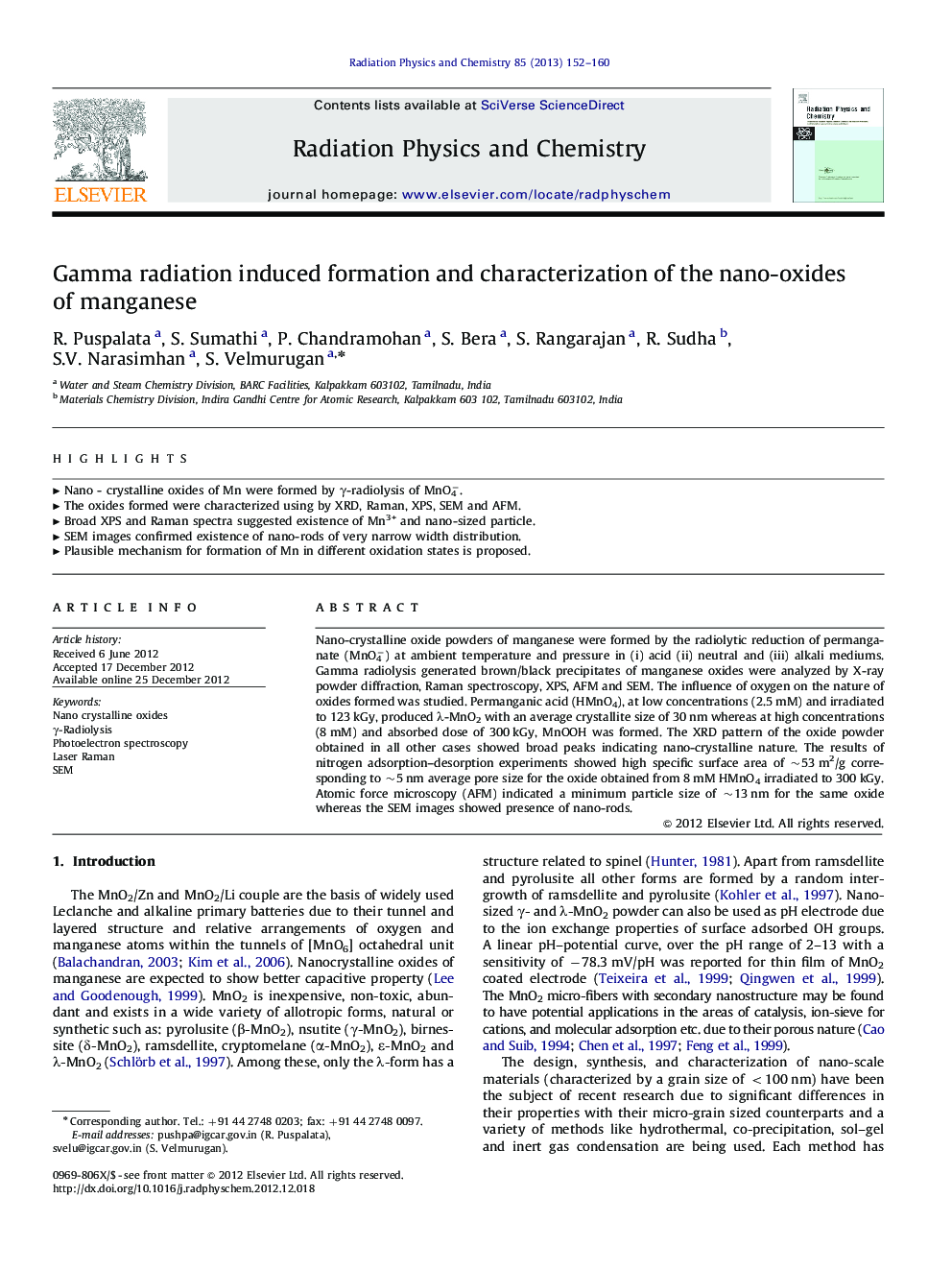| Article ID | Journal | Published Year | Pages | File Type |
|---|---|---|---|---|
| 1886257 | Radiation Physics and Chemistry | 2013 | 9 Pages |
Nano-crystalline oxide powders of manganese were formed by the radiolytic reduction of permanganate (MnO4−) at ambient temperature and pressure in (i) acid (ii) neutral and (iii) alkali mediums. Gamma radiolysis generated brown/black precipitates of manganese oxides were analyzed by X-ray powder diffraction, Raman spectroscopy, XPS, AFM and SEM. The influence of oxygen on the nature of oxides formed was studied. Permanganic acid (HMnO4), at low concentrations (2.5 mM) and irradiated to 123 kGy, produced λ-MnO2 with an average crystallite size of 30 nm whereas at high concentrations (8 mM) and absorbed dose of 300 kGy, MnOOH was formed. The XRD pattern of the oxide powder obtained in all other cases showed broad peaks indicating nano-crystalline nature. The results of nitrogen adsorption–desorption experiments showed high specific surface area of ∼53 m2/g corresponding to ∼5 nm average pore size for the oxide obtained from 8 mM HMnO4 irradiated to 300 kGy. Atomic force microscopy (AFM) indicated a minimum particle size of ∼13 nm for the same oxide whereas the SEM images showed presence of nano-rods.
► Nano - crystalline oxides of Mn were formed by γ-radiolysis of MnO4−. ► The oxides formed were characterized using by XRD, Raman, XPS, SEM and AFM. ► Broad XPS and Raman spectra suggested existence of Mn3+ and nano-sized particle. ► SEM images confirmed existence of nano-rods of very narrow width distribution. ► Plausible mechanism for formation of Mn in different oxidation states is proposed.
